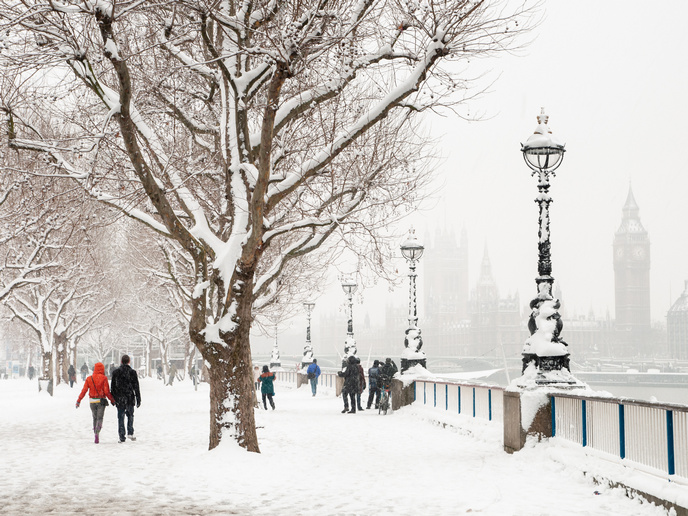What would happen if all the Arctic ice melted?
In the 2004 blockbuster ‘The Day After Tomorrow’, melting polar ice sheets put an abrupt stop to the global system of ocean currents known as the Atlantic Meridional Overturning System (AMOC), plunging much of the planet into a new ice age. While the film’s premise is unlikely to happen in the timescale it covers, scientists have been concerned about a potential slowdown of the AMOC for decades. As warm water travels north, it releases heat into the atmosphere – helping to keep Europe’s climate relatively balmy – before cooling, becoming more dense, and sinking to the ocean depths. The freshwater from melting ice sheets is less dense than salt water, so with enough added into the ocean, the system may slow. If this happens, a far colder climate for Europe could be a reality. “There are lots of climate models that show the AMOC is going to weaken,” says Semper. But she explains that these global climate models struggle to resolve smaller-scale processes, such as dense-water formation. Resolving these might actually reduce the projected weakening of the AMOC in the models. “They maybe don’t represent this, what we call now the glimmer of hope,” Semper says. In the EU-funded SUPERFLOW project, Semper explored how the warm-to-cold transformation of water is changing in the Nordic Seas. Her research(opens in new window) showed that as the sea-ice edge east of Greenland is retreating, the formation of dense water has shifted farther west compared to four decades ago. “Just because the sea ice is retreating, it doesn’t mean that it slows down the entire formation of dense water,” she notes. “It just shifts locations.” And in more recent research(opens in new window), Semper and colleagues found that as some areas of the Arctic Ocean become ice-free, the barrier between ocean and atmosphere has been removed, which exposes a larger area of the ocean to the cold atmosphere. Surface water in these Arctic regions is exposed to polar air, which cools the water enough for it to sink. The team believe this may be one reason behind the AMOC remaining relatively stable for the last few decades, even as polar ice sheets are melting. The catch is that the edge of sea ice is needed to bring winds to cool the water, so the clock is still ticking. “I guess at some point, global warming will just win,” adds Semper. “If there’s no sea ice at all, it might become difficult.” The scientists are continuing their research into AMOC through the EU-funded ROVER project. “We’re trying to find out more about the resilience of the system,” says Semper. Read more about Stefanie Semper’s research: Dense water formation moves westward following Greenland’s retreating ice edge



